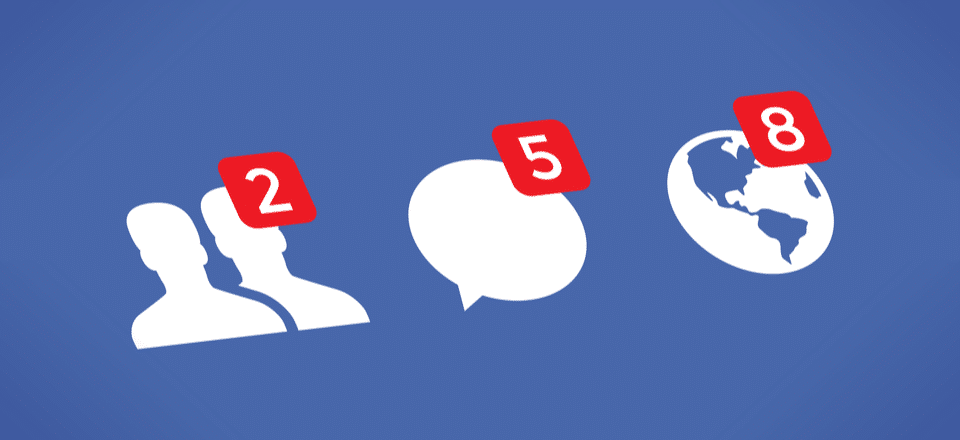The Google ecosystem offers a wide reach and tools for business owners who are looking to advertise their products and services. So, it’s good thinking to channel your marketing plans in that direction too. But how do you get started? How do you start running ads on Google platforms? That is what this blog post will share today!
Are you looking to advertise your products and services on Google but don’t know how to start? In this blog post, we will provide an explanation of how advertising on Google works. Also, the post will share how you can use Google features such as Google Maps, Google Shopping, and Google My Business to advertise your products or services.
How Does Advertising on Google Work?
Google Ads, formerly Google Adwords, is a paid online advertising platform where advertisers bid on specific keywords to display their ads on Google’s Search Engine Results Page (SERP). The process begins with advertisers selecting keywords and setting a maximum bid.
Google operates under a pay-per-click (PPC) model, where advertisers pay only when users click on their ad. Google determines the cost per click (CPC), which can be less than the maximum bid, especially if the ad produces a good quality score.
A quality Score metric is used to assess ads, keywords, and landing pages, with a score ranging from 1 to 10. A higher score can lead to lower prices and better ad positions.
Google calculates the Ad Rank, which determines the ad’s position on the SERP within fractions of a second. The highest bid does not guarantee the top spot, as Google considers the Quality Score to ensure the best possible experience for users clicking on ads. A more relevant and better ad by someone who bids less may be shown over the highest bidder. Google Ads also considers the landing page’s account history, relevance, and user-friendliness. In addition to the PPC model, Google Ads offers cost-per-mille (CPM) and cost-per-engagement (CPE) models.
Google Advertising Platforms
Google offers various advertising platforms catering to different needs and objectives. The two main platforms are Google Ads and the Google Marketing Platform.
Google Ads
Google developed Google Ads, formerly known as Google AdWords, as an online advertising platform. Advertisers bid to display brief advertisements, service offerings, product listings, or videos to web users. It can place ads both in the results of search engines like Google Search (the Google Search Network) and on non-search websites, mobile apps, and videos. Services are offered under a pay-per-click (PPC) pricing model. Key features of Google Ads include:
- The ability for advertisers to manage ads on the Google Ads website or using Google Ads Editor, a downloadable program that allows users to make bulk changes to ads and edit ads offline,
- The Keyword Planner provides data on Google searches and other resources to help plan advertising campaigns.
- Google Ads Manager Accounts allow users to manage multiple accounts from one login and dashboard.
- The Reach Planner allows users to forecast the reach and extent of their video ads across YouTube and Google Video partners.
- Remarketing allows marketers to show advertisements to users that have previously visited their website and allow marketers to create different audience lists based on the behavior of website visitors.
Google Marketing Platform
The Google Marketing Platform is a suite of advanced advertising products designed for search marketing, complex campaigns, and rich media ads. It is a more advanced tool that allows marketing teams to manage their advertising campaigns by collecting information about how someone has browsed online and key data on advertising performance. Key features of the Google Marketing Platform include:
- Advanced custom reporting and in-depth analysis capabilities
- Ability to import data from multiple sources, such as CRM systems, email tools, ad platforms, and offline data sources
- Multiple integrations with non-Google ad technology
- Combined with a Creative Management Platform (CMP), it enables dynamic creative optimization (DCO).
What are the Benefits of Google Ads for Online Advertising?
Google Ads is a significant tool for online advertising for several reasons:
Precise Targeting and Reach
Google Ads allows businesses to display their ads to people likely interested in their products and services. This precision in targeting means your ads are shown to the right people at the right place and time. You can filter out those unlikely to be interested in your offerings. Google Ads allows targeting based on age, gender, location, interests, and top-performing keywords for your brand. This precise targeting not only maximizes the effectiveness of your ads but also leads to a higher return on investment (ROI).
Wide Audience
Google processes over 5 billion searches daily, providing an enormous audience for businesses to tap into. In addition to Google Search, Google Ads allows businesses to advertise on its other platforms, such as Gmail, YouTube, and the Google Display Network, which represent over 90% of all internet users worldwide.
Control Over Costs
Google Ads gives businesses control over their advertising expenditures. There’s no minimum spend, and you can decide how much you spend per month, day, and ad. You only pay when someone clicks on your ad. This cost control makes online advertising accessible to businesses with limited advertising budgets.
Faster Results and Better ROI
Unlike SEO, which takes time, Google Ads offers a faster route to getting your website to the top of search results. Thanks to Google Ads’ pay-per-click (PPC) model, you only pay when someone clicks on your ads, which results in a better ROI. Google’s powerful analytics help you gain clear insights into what’s working and what’s not, helping you optimize your ad campaigns.
Integration With Analytics
Google Ads integrates with Google Analytics and other third-party tools, providing valuable behavioral metrics and insights into the performance of your ads. This data can help you discover new opportunities, optimize your campaigns, and increase your sales.
Benefits of SEO and Content Marketing
Google Ads can be used with your SEO and content marketing strategies. By targeting specific keywords, you can find out which ones are the most profitable. This can help you expand your SEO strategy and increase your content marketing ROI
How to Advertise on Google
To advertise on Google, you need to follow several steps:
- Create a Google Ads account: First, you need to sign up for a Google Ads account. Visit the Google Ads homepage, click ‘Start Now,’ and sign in with your Google account or create a new one.
- Define Your Advertising Goals: Select the type of campaign that suits your needs based on your advertising objective and brand strategy. Google Ads offers various campaigns such as Search, Display, Video, Shopping, Discovery, App, Local, Smart, and Performance Max.
- Select a Campaign Type: Each campaign type has a different setup and set of best practices. The campaign type determines where customers will find your ads online.
- Set up the Ad Group: Ad groups contain one or more ads that share similar targets. You can add your keywords or enter your website URL, and Google will provide them.
- Write the Ad: Google Ads provides a platform for creating your ad with sections for headers, descriptions, the URL path, and additional URL options. Ensure your ad is short, clear, uses keywords, includes a call to action, and gives people a reason to click.
- Set up your billing: Enter your billing information and any promotional codes you might have.
How to Advertise on Google for Free
Advertising on Google for free can be achieved through different methods, such as gaining high rankings in organic search, creating a Google My Business account, and adding your products to Google Shopping. Here’s a detailed explanation of each method:
Achieve High Rankings in Organic Search
The first way to get free exposure on Google is to rank high on the organic search results for keywords besides your brand name. This is achieved through a process called Search Engine Optimization (SEO). SEO helps you optimize your website for Google so that it shows up in the search results for the keywords that matter to your business. Studies have shown that most organic traffic goes to the first five results. Therefore, to take advantage of this free opportunity to advertise your website on Google, your website must be fully optimized for search engines.
Create a Free Google My Business Account
Another way to get free exposure on Google is by creating a Google My Business account. Google is providing local businesses with this service for free. By opening an account, verifying your business, and updating your information, you can increase your chances of appearing in the local results for searches related to your business and area. This process is known as local SEO. To optimize your local business to appear for location-aware searches, you should ensure that all information in your Google My Business account is accurate and up-to-date, add images of your business, and ensure that your business address is visible on your homepage and in the correct format.
Add Your Products to Google Shopping
Lastly, you can advertise your products on Google without paying through Google Shopping. Creating a product feed that Google Merchant Center can accept is simple if you use a well-known shopping platform like WooCommerce or Shopify. Once your product feed is submitted and Google approves your products, they can appear for related searches in all Google properties. However, currently, this feature is available for US merchants only, but it will expand globally in the future.
Advertising on Google Maps
Google Maps is a digital advertising service that helps businesses increase visibility and reach potential customers in specific geographic areas. These local search ads, linked to a business’s Google Business Profile, are displayed at the top of search results, attracting nearby customers. For advertising, Google Maps use location targeting, and it has been proven effective in influencing consumer behavior during crucial times, leading to increased business sales volume and size.
How to Advertise on Google Maps
Advertising on Google Maps is a powerful way to attract local customers to your business. Follow these steps to advertise on Google Maps:
Update & Verify Your Google My Business (GMB) Listing
Before advertising on Google Maps, you must create a listing for your business on Google and get it officially verified. Navigate to Google My Business, and click “Start Now” to set up your account. Follow the instructions to set up your Google My Business Profile. After you’re done, you might have to wait a week or two for Google to mail you a confirmation letter. This step is necessary so Google can verify your business’s physical location.
Set Up Search Ads With a Location Extension.
Once you have search ads running, you can create Google Maps advertising campaign using the location extension. This extension displays ads with information like your business address, phone number, a map marker, and even the distance to your business from the user’s current location.
To enable location extensions, go to your Google Ads dashboard and click on the left-hand menu panel. Find the Ads and Extensions option and click Extensions. Scroll to the bottom of the page and click AUTOMATED EXTENSIONS. Then choose Location in the dropdown menu. Then click Create ad extension.
Target-Specific Specific Keywords
Optimize the keywords you use in your ads by tracking what potential customers in your area are searching for. This way, you can more effectively ensure that your business appears in the organic results of searches conducted by users in your target markets. Use a mix of both general and specific keywords. Google recommends using 5–20 keywords per ad group.
Set Up Location Targeting
To set up specific location targeting for your ads, click on the locations section on the left-hand menu and then click the blue circle at the top. Select an active search campaign from the list and enter the specific area you want to target. Use radius targeting to target people within the area. Be sure to set up bid adjustments for areas close to your business. By doing this, people close to your business address will have a much higher chance of seeing you on Google Maps.
Monitor Your Ads Performance
Once your ads are approved and running, you can check how people interact with your local ads by filtering the “type” of clicks they receive. This will segment everything into location details, mobile clicks to call, and driving directions interactions, giving you an idea of how well your ads perform.
Advertising on Google My Business
Google My Business, now known as Google Business Profile, is a free tool that enables businesses to manage their online presence across Google platforms like Google Search and Google Maps. It allows businesses to create and verify business information, which can be displayed on Google.com, Google Maps, and Google Earth. Google My Business also integrates with Google Ads, enabling businesses to advertise their products or services directly to potential customers. By linking Google My Business to Google Ads, businesses can increase visibility, control their online information, and attract new customers.
How to Advertise With Google My Business
Advertising on Google My Business, now known as Google Business Profile, can help increase your business’s visibility across Google services and attract new customers.
Create a Google Business Profile
This is a free business listing from Google where you can provide details and photos of your business. By meeting with clients in other locations, you can create a Google Business Profile if your business has contact with customers, such as a physical location or services.
Add Your Business and Enter Your Location
Enter your business name and select the appropriate category for your business. If you have a physical location customers can visit, add your business address. If your business offers in-person services or deliveries, list your service areas.
Verify Your Business
Enter your real physical address (not a post office box) for verification. This information needs to be displayed on your Google Business Profile or shared with the public. Verification methods vary by business type, with physical businesses needing to receive a postcard by mail and service-area businesses being verified through an email address.
Complete Your Profile
Customers are more likely to consider your business reputable if you have a complete Google Business Profile. Make sure to provide accurate and up-to-date information about your business.
Add Real Images and Videos of Your Business.
Your Google Business Profile includes a logo and cover photo. Use images consistent with those on your social profiles to make it easier for people to recognize your brand. You can also add images and videos to showcase your location, work environment, and team.
Optimize Your Google Maps Listing.
If you have a Google My Business account, ensure your website is mobile-friendly, as Google Maps searches are often performed on mobile devices.
Advertise with Google Ads
Google’s advertising service, Google Ads, allows you to place advertisements that will appear around search engine results related to your product or service. You can create an ad group, write your advertisement, enter keywords related to your business, and set your daily budget for clicks to your business website.
Remember, you must regularly maintain and update your Google Business Profile to ensure that all information is accurate and up-to-date to maximize your business’s visibility on Google.
Advertising on Google Shopping
Google Shopping is a service that enables customers to search, view, and compare products. It is powered by Google AdWords and Google Merchant Center, which enable retailers to advertise their products to searchers. Google AdWords manages shopping campaigns, while Google Merchant Center stores retailer data.
To advertise on Google Shopping, products must be submitted to the Google Merchant Center and linked to Google Ads. Google Shopping Ads boost product visibility on Google Search, appearing first in searches in a carousel with product images.
How to Advertise on Google Shopping
To advertise on Google Shopping, you need to follow several steps:
Set Up Your Business Information in Google Merchant Center
To advertise on Google Shopping, you need to first sign up for a Google Merchant Center account. Google Merchant Center is a tool that helps you upload your store and product data to Google and make it available for Google Shopping and other Google services. You must verify and claim your website URL to connect your e-commerce website with the Google Merchant Center.
Create a Product Data Feed.
A data feed is a file made up of a list of products that use groupings of attributes that define each one of your products uniquely. Attributes can include ‘id,’ ‘title,’ ‘description,’ ‘google_product_category,’ ‘product_type,’ ‘link,’ ‘image_link,’ ‘condition,’ ‘availability,’ ‘price,’ etc. You can create a data feed manually or automatically, depending on your e-commerce platform.
Link Google AdWords and Google Merchant Center
You need to link your Google AdWords account to your Merchant Center account to create Shopping campaigns, which are the key to advertising your products on Google Shopping. This allows your AdWords campaigns to use your Merchant Center product data.
Set up a Google Shopping Campaign.
You can set up a new Shopping campaign in your Google AdWords account. You’ll be asked to name your campaign, select the Merchant Center account that contains the products you want to advertise, set a budget, and choose a bidding model. After setting up your campaign, you can create ad groups and set bids for each group. You can also use Google’s automated bidding options to optimize conversions or conversion value bids.
Optimize Your Product Listings.
Once your ads are live, monitoring their performance and optimizing your product listings are important. This may involve adjusting bids, improving product titles and descriptions, adding high-quality images, and using Google’s performance metrics to understand which products drive clicks and conversions.
Remember, Google Shopping operates on a cost-per-click (CPC) model, so you only pay when someone clicks on your ad.
How Much Does It Cost to Advertise on Google?
The cost of advertising on Google Ads varies depending on factors like industry, campaign targeting, and ad network. The average cost-per-click (CPC) for Google Ads in 2023 ranges from $1 to $2 for the Google Search Network and $1 for the Google Display Network. Industries with higher CPCs tend to spend more on Google Ads, such as the consumer services sector, which pays almost $7 per click. There is no minimum budget for Google Ads, but starting with lower budgets is recommended to collect initial data and make necessary adjustments. The average CPC for Google Ads can range from $0.5 to $50, depending on bids and industry.
The cost of Google Ads is subjective and depends on factors like expected revenue from a new customer and profit margin per customer. Businesses in industries with higher customer lifetime values may be willing to spend more per click. The Google Ads auction is a major factor in determining the cost of a Google ad, and businesses have complete control over their ad spend. Monitoring the performance of ads and adjusting the budget accordingly can help inform your bidding strategy.
- SMALL BUSINESS ADVERTISING IDEAS AND COSTS IN 2023
- MEDIA PLANNING: What Is It & Why Is It Important?
- LOCAL ADVERTISING: What It Is, How It Works, and Marketing Ideas That Works
- How to Start a Business Facebook Page






